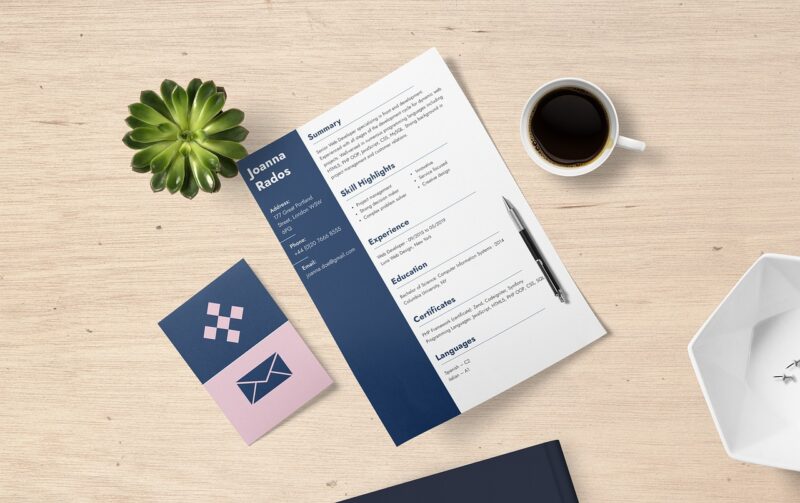
In today’s competitive job market, a well-crafted resume is essential for making a strong impression on potential employers. Your resume is often the first point of contact you have with hiring managers and can be the deciding factor in whether you secure an interview. In this comprehensive guide, we will walk you through the steps to create a winning resume that not only showcases your skills and experiences but also effectively conveys your unique value proposition.
1. Understand the Purpose of a Resume
A resume serves multiple essential purposes:
- Showcase Your Skills: Your resume highlights your qualifications, relevant experiences, and professional skills to potential employers.
- Serve as a Marketing Tool: Think of your resume as a marketing brochure for yourself. It should sell your talents and experiences to the hiring manager effectively.
- Create a First Impression: It’s often the first impression you give to employers, making it crucial for it to be polished and professional.
Understanding the purposes of a resume will help guide how you design and format it to best support your job application.
2. Research Your Target Job
Before crafting your resume, it’s crucial to know what employers in your desired field are looking for. Tailoring your resume ensures it speaks directly to the job description. Here’s how to conduct your research effectively:
- Analyze Job Descriptions: Study several job postings related to your target position. Note the required skills, qualifications, and keywords that frequently appear.
- Use Informational Interviews: Reach out to professionals in your field and ask them what they value most in resumes. This insight can guide your content creation process.
- Seek Feedback: Consult friends or mentors for their opinions on the types of resumes that catch their attention when seeking candidates for a role similar to the one you desire.
Conducting thorough research will help you identify what employers want, enabling you to market yourself more effectively in your resume.
3. Choose the Right Format
Selecting the appropriate resume format is essential for organizing your information clearly. The three most common formats are:
- Chronological Resume: Lists your work history in reverse chronological order. It’s ideal if you have a solid work history in the field you’re applying for.
- Functional Resume: Focuses on your skills and experiences instead of chronological work history. It’s suitable for those with gaps in employment or changing careers.
- Combination Resume: Merges elements of both chronological and functional formats, allowing you to highlight skills while providing a timeline of your work history.
Choose a format that best reflects your professional background and highlights the skills that make you a good fit for the job.
4. Craft a Strong Opening Section
The opening section of your resume is vital for grabbing a recruiter’s attention. Consider including the following:
- Contact Information: Always start with your full name, phone number, email address, and LinkedIn profile (if applicable). Ensure this information is prominently displayed at the top of your resume.
- Professional Summary or Objective: Write a brief summary (2–3 sentences) that encapsulates your experience and what you bring to the potential role. Alternatively, if you are early in your career, you may prefer to use a career objective that outlines your goals and key skills.
This section sets the tone for the rest of your resume and should be tailored to the job you’re applying for.
5. Detail Your Work Experience
Your work experience section is the backbone of your resume. Here’s how to structure it effectively:
- List Jobs in Reverse Chronological Order: Start with your most recent job and work backward, providing the job title, company name, location, and dates of employment.
- Use Bullet Points: Break down your responsibilities and achievements into concise bullet points, making it easy for hiring managers to read quickly.
- Quantify Achievements: Whenever possible, use numbers and metrics to showcase your impact in past roles. For example, “Increased sales by 30% year-over-year.”
This section allows you to communicate your value directly related to the job, demonstrating how you can benefit the employer.
6. Highlight Relevant Skills
In this section, you should include a mix of hard and soft skills that are relevant to the job you are applying for:
- Hard Skills: Technical abilities or specific competencies relevant to the job, such as software proficiency or data analysis.
- Example: Proficient in Microsoft Excel and Salesforce.
- Soft Skills: Interpersonal skills or traits that highlight your ability to work well with others.
- Example: Strong communication skills, effective team collaboration, and problem-solving abilities.
- Tailor Your Skills List: Refer back to the job description for keywords and prioritize those skills that align closely with the position’s requirements.
Presenting a compelling skills section makes it clear to hiring managers that you possess the qualifications they seek.
7. Include Education and Certifications
This section should include relevant educational qualifications and any certifications that are pertinent to the job:
- Education: List your degree(s), major(s), school(s), and graduation date(s). Include any honors or relevant coursework if applicable.
- Certifications: Add any professional certifications that are relevant and endorse your skills for the job. Examples include CPR certification, project management certifications, or industry-specific qualifications.
Including your education and certifications helps to reinforce your qualifications and dedication to the field.
8. Additional Sections to Consider
Depending on your background and the job, consider adding sections to showcase your additional qualifications or activities:
- Volunteer Experience: Demonstrating community involvement can impress employers and showing your well-rounded character can make you memorable.
- Languages Spoken: If you are bilingual or multilingual, this could be an asset in many jobs and sets you apart from other candidates.
- Professional Associations: Listing memberships in relevant organizations showcases your commitment to your profession.
These additional sections provide hiring managers with a more comprehensive view of who you are.
9. Tailor Each Resume for the Job
Once you have created a strong resume template, it’s essential to customize it for each job application. It may require effort, but tailoring your resume significantly increases your chances of being noticed. To do this:
- Adjust Keywords: Use relevant keywords from the job description to enhance the chances of getting past automated applicant tracking systems (ATS).
- Highlight Relevant Experience: Prioritize specific achievements and skills that match the job requirements for that particular position.
- Keep it Concise: Aim for a resume length of one page (two pages for extensive experience) and ensure that every word adds value to your application.
Customization demonstrates your genuine interest in the job and increases the likelihood of standing out.
10. Proofread Your Resume
Finally, your resume must be free of errors. Take the time to proofread and edit your document comprehensively:
- Check for Spelling & Grammatical Errors: Typos and grammatical errors can create a negative impression, so read through it multiple times and consider using grammar-checking tools.
- Ask for Feedback: Have friends or colleagues review your resume for clarity and to catch any mistakes you might have overlooked.
A polished resume signals professionalism and attention to detail, both of which are highly valued by employers.
Conclusion
Creating a winning resume is a crucial step in the job application process that can significantly shape your career path. By following the strategies discussed in this guide, you’ll be well-equipped to create a resume that stands out, showcases your strengths, and successfully markets your potential to future employers. Remember, investing time in crafting your resume is an investment in your professional future. Take advantage of every opportunity and put your best foot forward — your dream job may be just a resume away.







